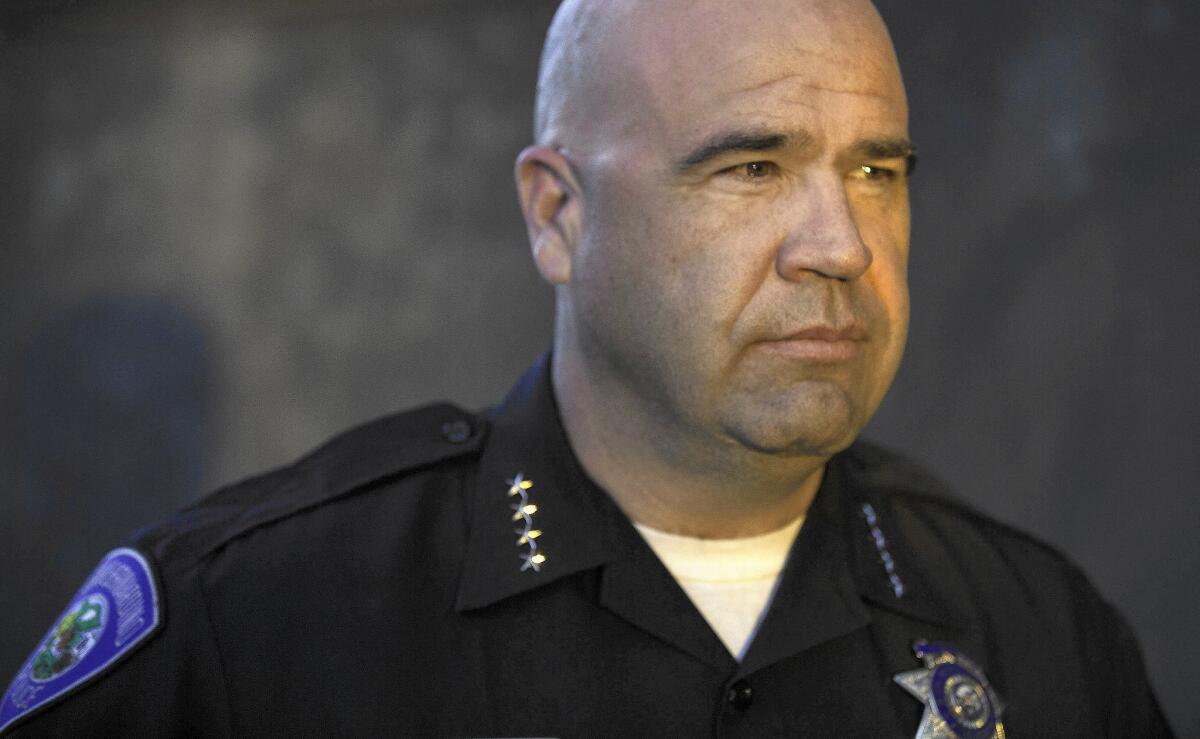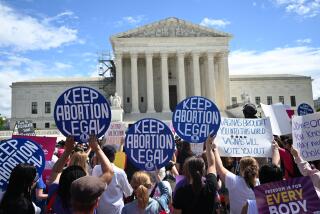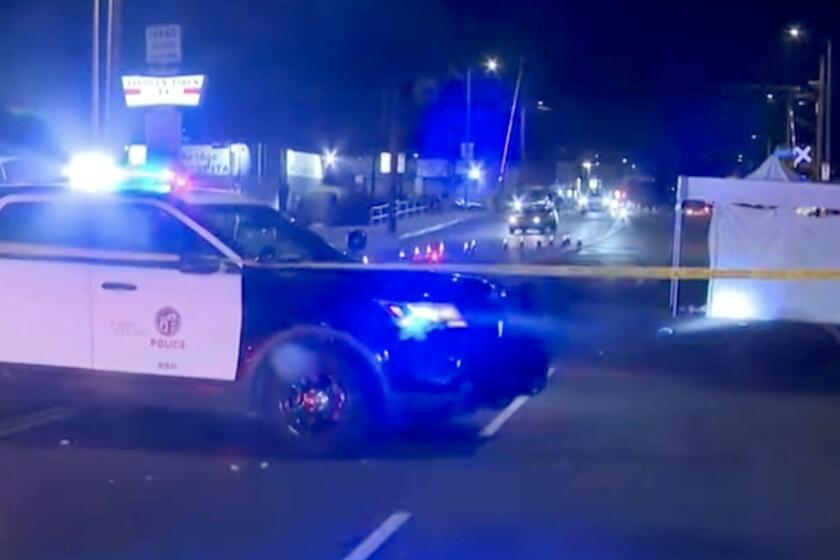Analysis: After the San Bernardino tragedy, elected leaders were notably absent

Perhaps it’s unfair that a politician’s response to crisis will forever be measured against that of New York Mayor Rudolph W. Giuliani on Sept. 11, 2001, striding the streets of Manhattan with ash flying and face mask in hand, ordering New Yorkers to march north to safety and away from the cratered remains of the World Trade Center towers.
The overwhelming drama of Giuliani’s first televised statements — which segued into round-the-clock news conferences and a constant physical presence in the wounded city by Guiliani, then-Gov. George Pataki and, occasionally, President George W. Bush — contrasted with the underwhelming response 11 days ago to the terrorist attack in San Bernardino.
Local officials arrived promptly, aided by geography. Gov. Jerry Brown showed up only briefly before heading to Paris for the international conference on climate change. President Obama has yet to visit, though his spokesman would not rule out a trip before his Hawaii vacation begins at the end of this week. Obama did deliver Oval Office remarks on the shooting, which appeared to do little to calm nerves.
San Bernardino: Everything we know about the investigation so far
Part of the difference between 9/11 and the events of Dec. 2 was, of course, the sheer scale: As awful as the deaths of 14 people in San Bernardino were, thousands died in the collapse of the towers, the crashing of a third plane into the Pentagon and the loss of a fourth in Pennsylvania after passengers revolted against the hijackers.
In size, San Bernardino was more akin to the mass shootings that have become part of American life, and that have prompted officials to respond mostly with partisan fights over gun control.
Some of that took place after San Bernardino, with Brown and Lt. Gov. Gavin Newsom, among others, talking about the impact of guns. But for the most part, the role Giuliani played 14 years ago was performed by San Bernardino police Chief Jarrod Burguan.
The career cop merged straight talk, sympathy and a tough physical presence to serve as communal comforter in the hours after the shooting. (And, of course, he employed tools that didn’t exist in 2001 — social media platforms — to keep people in the know.)
Still, San Bernardino was the biggest explosion of international terrorism on American soil since 9/11, so the thin representation of elected officials was notable.
And it raised a few questions: In times of crisis, do people still want solace and information from politicians, or is that a vestige of the past? Is the show of public concern more or less important than the behind-the-scenes work done in San Bernardino by the county Office of Emergency Services and the California Highway Patrol?
Californians seem to prefer their politicians to be seen and not heard. Until they don’t. In the past, that has prompted a ubiquitous presence by state leaders when crisis strikes.
Pete Wilson raised crisis response to something of an art form when he was governor. A combination of arctic freezes, fires, drought, recession and riots led him to issue disaster declarations in 56 of the 58 counties even before the Northridge earthquake struck in 1994, at the beginning of his fourth year in office.
Wilson became as common on Southern California newscasts as the weather report. In a joint effort with federal officials for which the governor served as the public face, work crews were able to reopen the Santa Monica Freeway to motorists 84 days after it had shattered in the quake.
Clinton administration Democrats griped that their role was elbowed aside by Wilson, yet the demonstration of capability by government work crews helped cement his image as an able manager, and helped cement his reelection that year.
Historically, voters have wanted to know from people in power that things eventually will be all right, even if chaos reigns in the moment.
“Being a governor isn’t just about running the government,” said Dan Schnur. In 1994, Schnur was the communications director for Wilson’s campaign; he now directs USC’s Jesse M. Unruh Institute of Politics. “People do look to their elected leaders for guidance in times of trauma.”
Different Californians have different thresholds of need, he added, but “after a mass shooting, most people want some reassurance that their elected leaders are on top of things.”
Brown delayed his trip to Paris by a day to visit with officials in San Bernardino and pledge that they “would spare nothing” in bringing the perpetrators to justice. Brown spokeswoman Deborah Hoffman said the governor considered canceling the trip, but went ahead after the shooters were killed by police in the hours after the attack.
The climate change event Brown was headed to served as something of a pinnacle for his time in office, focusing as it did on a subject that inspires more passion in Brown than any other. And that played into his decision to go, Hoffman said.
“I don’t believe the governor would have traveled to any other type of planned event,” she said.
State and federal officials have hewn to familiar roles in the wake of the tragedy. The state’s senior senator, Dianne Feinstein, has hammered Democrats and Republicans alike on their response to homegrown terror and Islamic State militants abroad.
For all the panning of his speech by Republicans and some Democrats, Obama has persisted in a daily overseas assault that has cut into the leadership of the terror group — although, as made evident in San Bernardino, not diminished its reach.
In the aftermath of floods or fires, politicians mostly provide comfort. A week and a half after the attack in San Bernardino, there was a sense that it would take more this time, that the nation has entered a long and unpredictable slog against terror that will not solve itself as swiftly as homes can be rebuilt.
How to get through that might have been a topic for politicians to raise in San Bernardino. If, that is, they had stuck around, or showed up at all.
cathleen.decker@latimes.com
Twitter: @cathleendecker
For more on politics, go to www.latimes.com/decker and www.latimes.com/politics.
MORE ON SAN BERNARDINO
Amid Farook family violence, brothers were a study in contrasts
FBI hunts for electronic trail that could link shooters to foreign terror groups
Enrique Marquez focus of intrigue and mystery in terrorism probe
More to Read
Sign up for Essential California
The most important California stories and recommendations in your inbox every morning.
You may occasionally receive promotional content from the Los Angeles Times.











